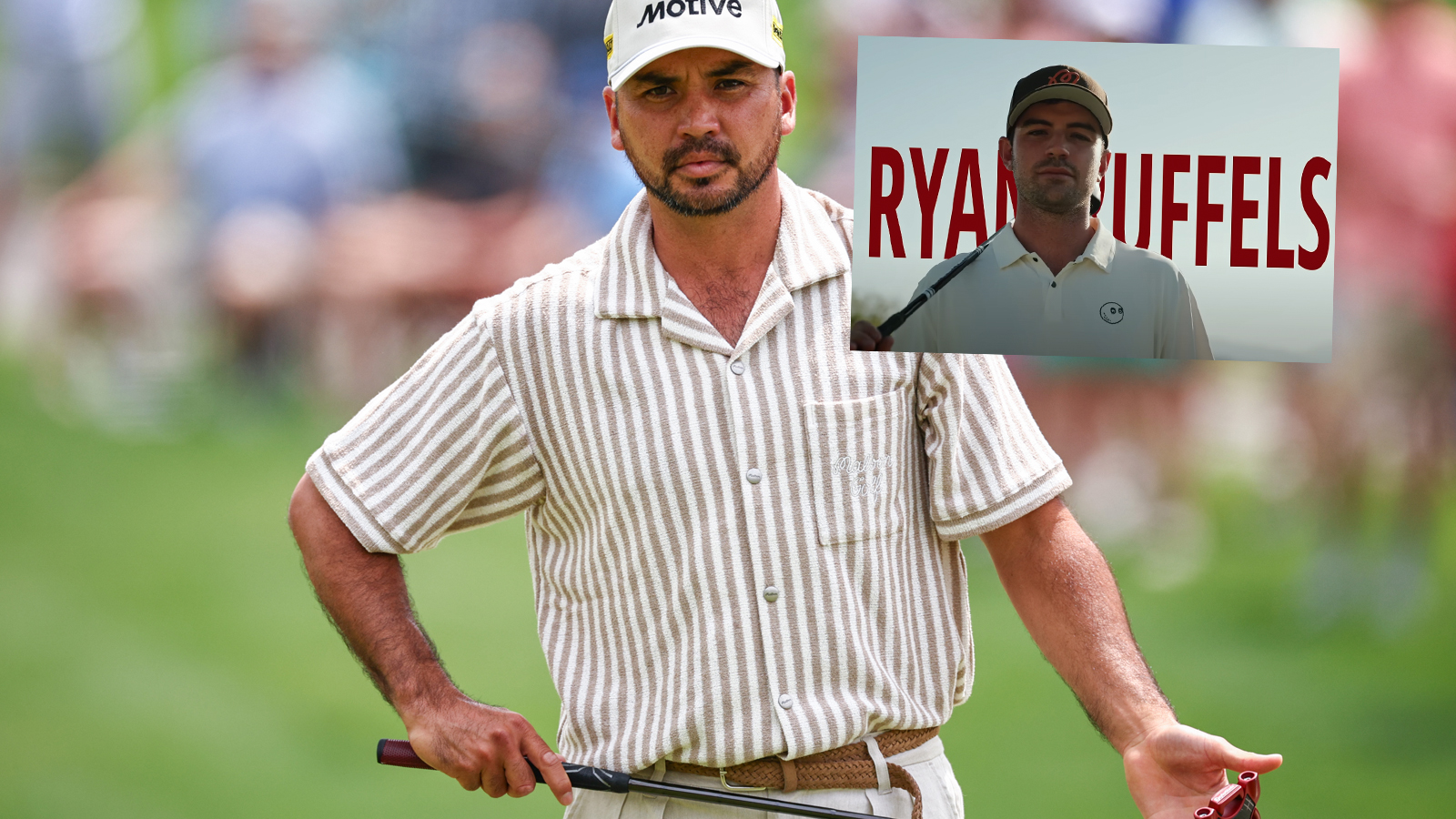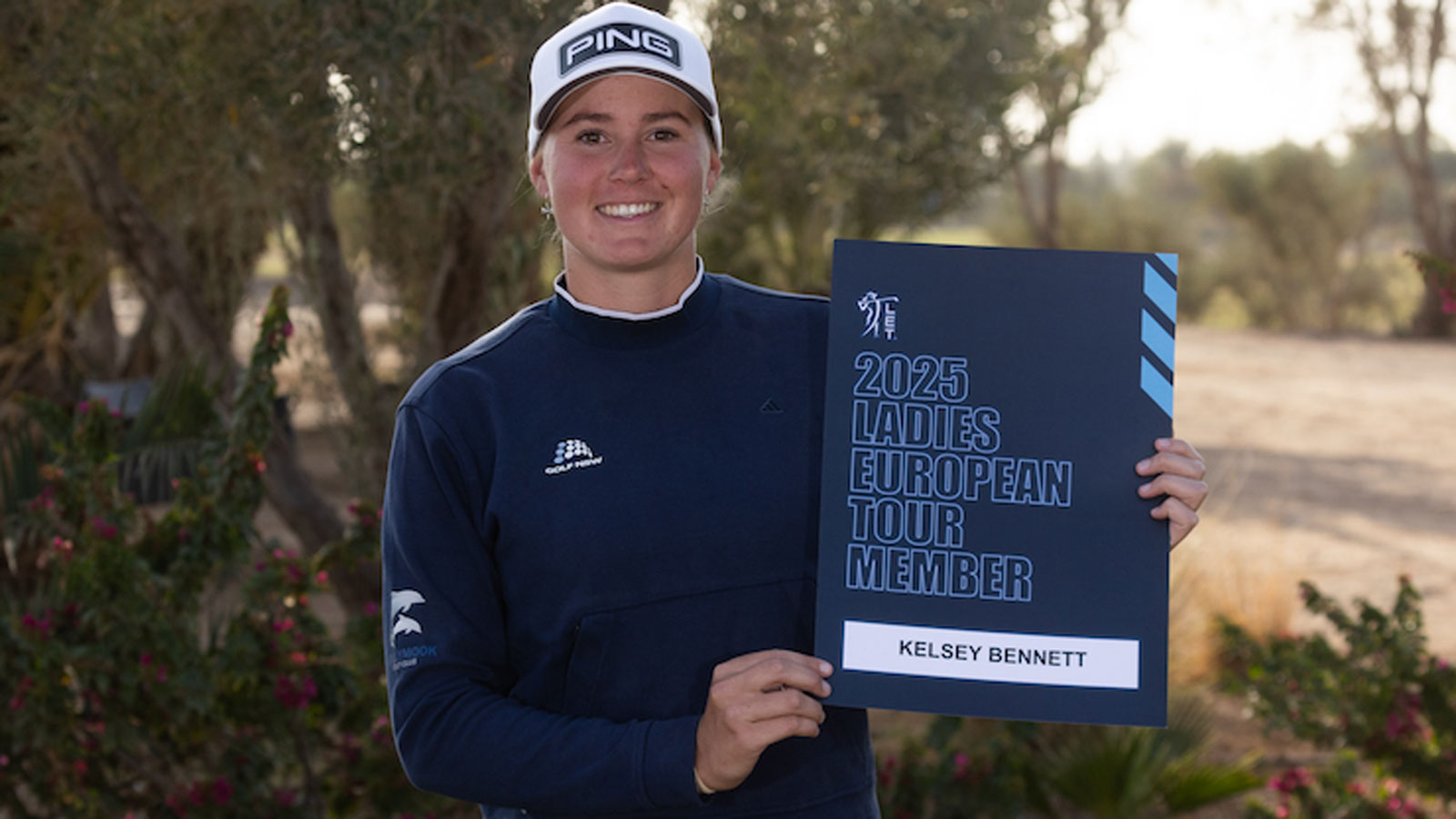Grayson Murray’s death pushes the hard conversations into the open: ‘It’s never been made real until now’ – Australian Golf Digest

- by Admin
- May 29, 2024
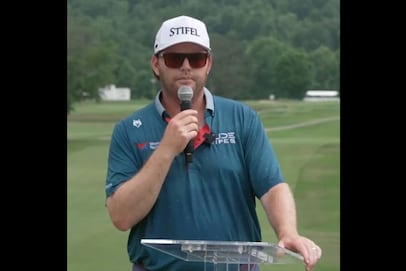
“Please honor Grayson by being kind to one another. If that becomes his legacy, we could ask for nothing else.” — Statement from Eric and Terry Murray, parents of PGA Tour winner Grayson Murray
“I saw someone on social media say about Grayson taking his own life, ‘I just don’t understand why …’ I just wanted to say, ‘You should thank God every day that you don’t understand!!’ Unfortunately, you don’t know until you know.” — Former tour professional Patrick Sullivan
The statement issued by Grayson Murray’s parents last Sunday was brief but powerful. Eric and Terry Murray offered that that their son “rests peacefully now” and described how much he was loved by family and friends. They also confirmed the PGA Tour player had taken his own life.
“It’s a nightmare,” they wrote.
At Colonial Country Club in Fort Worth, players filing off the course during the Charles Schwab Challenge struggled to reconcile how a man next to them on the range one day was gone the next. In interviews, many fought to maintain composure. Everywhere a subtext: This isn’t something you move past. Which is probably for the best.
If there are no silver linings in a suicide story, there can still be hope that Murray’s death brings attention to a subject many of us try to avoid. In the broader awareness campaign around mental health, there at least has been progress. Golfers such as Matthew Wolff, Bubba Watson and Lexi Thompson, who announced her retirement from golf Tuesday, have been admirably open about their struggles. As opposed to even a decade ago, a golfer confessing to anxiety and depression can expect more sympathy than stigma.
But suicide remains an elusive topic, hindered further by misinformation. A common concern is that asking someone if they have suicidal thoughts will plant the idea in their heads. Multiple studies have proven otherwise. According to the National Alliance of Mental Illness, “talking about suicide not only reduces the stigma, but also allows individuals to seek help.” There are also misconceptions about what a suicidal person should look like, or how they should act.
“People like to think in a binary fashion. As in, ‘that person is mentally ill. That person is not mentally ill,’’ said Dr. Michael Lardon, a clinical psychiatrist who works with several PGA Tour players. In reality, Lardon said, mental illness exists on a spectrum, and it’s more prominent in professional sports than people realize.
“Roughly 25 percent of the population have a diagnosable anxiety or depressive disorder. That’s 25 percent of the regular population, and this is not the regular population,” he said of pro golf. “This is a very high-stress environment.”
That environment is what Thompson has opted to escape. At 29, with 11 tour wins, the LPGA star said her pending retirement from professional golf was in part because of the emotional toll the game was taking.
“Being out here can be a lot,” she said. “It can be lonely.”
In 2019, after a tour player named Patrick Sullivan snapped a streak of 18 missed cuts on the Korn Ferry Tour, he spoke in an interview about the oppressive anxiety and depression he had been experiencing. When the interview was posted, he received a direct message from Grayson Murray. “I deal with it myself,” Murray wrote. “You are not alone.”
“I think golf is the perfect storm for mental-health struggles,” said Sullivan, who has since traded a career in competitive golf for coaching. “It attracts the loner, the anti-social type of people. It’s a difficult, highly competitive sport so there are a lot of losses and very few wins. It’s all on you, no teammates, and those losses begin to affect your self-worth.”
It’s not that any of these problems underscored by Murray’s death come with concrete solutions. But at least one part is simple: We need to be paying more attention.
Three years ago, a high school student in our suburban town took his own life. Those who knew him were devastated. Everyone was rattled. I remember texting my two teenage sons after hearing the news—a rambling paragraph about what happened, and how they could always talk to us, things like that. I knew this was a jarring topic for a couple of adolescent boys on a weekday afternoon. At that point I didn’t care.
I wasn’t alone. In the days after the suicide, a series of friends described similar exchanges with their children. Some I expected, others were surprising. These were all devoted parents, but some were unsteady navigating complex emotional terrain. Now their urgency was palpable. One of the darkest moments in our town had brought an essential topic to light.
More From Golf DIgest grayson murray death To honor Grayson Murray, Harry Higgs makes plea: ‘say something nice to somebody you do not even know’ 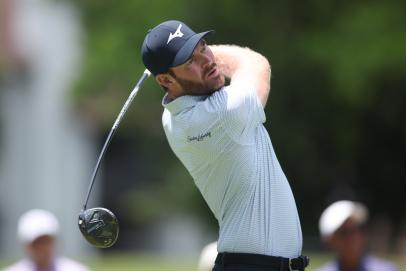 Reaction Golf world reacts with sorrow and disbelief at death of young star Grayson Murray
Reaction Golf world reacts with sorrow and disbelief at death of young star Grayson Murray
The first person I wanted to hear from after reading the Murray family’s statement was Sam Gerry. Sam and I have a curious connection. His father was my college roommate, and he is now on the Division III Bates College golf team with my older son. But Sam is not your typical college senior.
In 2018, I wrote about Sam’s battles with depression, and how they inspired his commitment to suicide prevention. In the story, Sam described how he knew something was seriously wrong when he lost his motivation to play golf, and how he grew increasingly mindful of a bottle of bleach he could be tempted to drink mere feet from his bed.
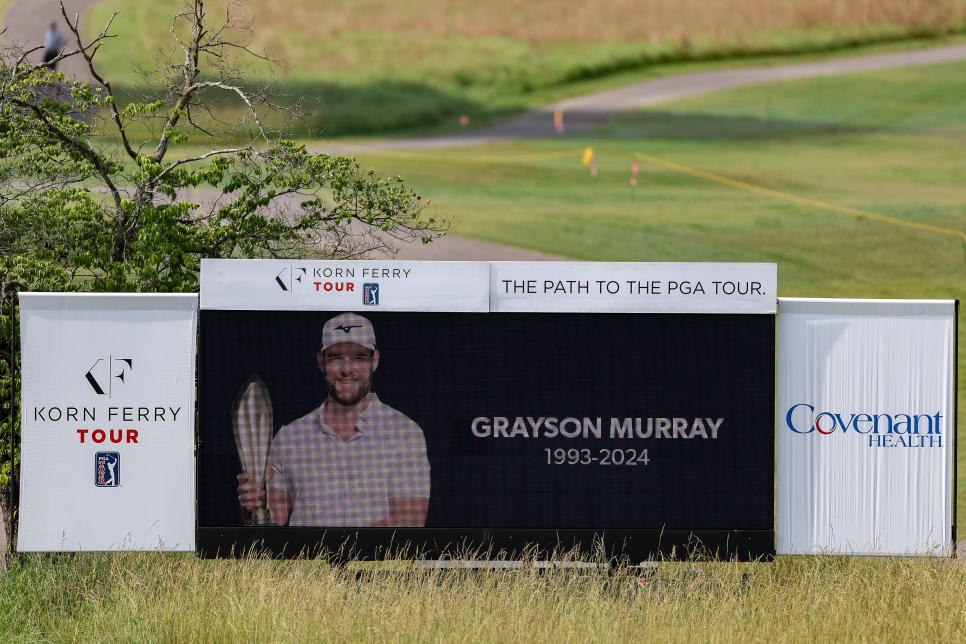
“I think golf is the perfect storm for mental health struggles,” former tour player Patrick Sullivan said.
Brennan Asplen
Over time, and with help, Sam’s depression became its own motivation. He first divulged his struggles in an essay on the American Junior Golf Association website, and then started an annual charity kickball tournament at his high school outside Boston to raise money for suicide prevention. He has since spent summers studying the epidemiology of suicide in a research lab at Rutgers University, won national awards from mental-health organizations for his leadership role and is now considering pursuing a doctorate in clinical psychology.
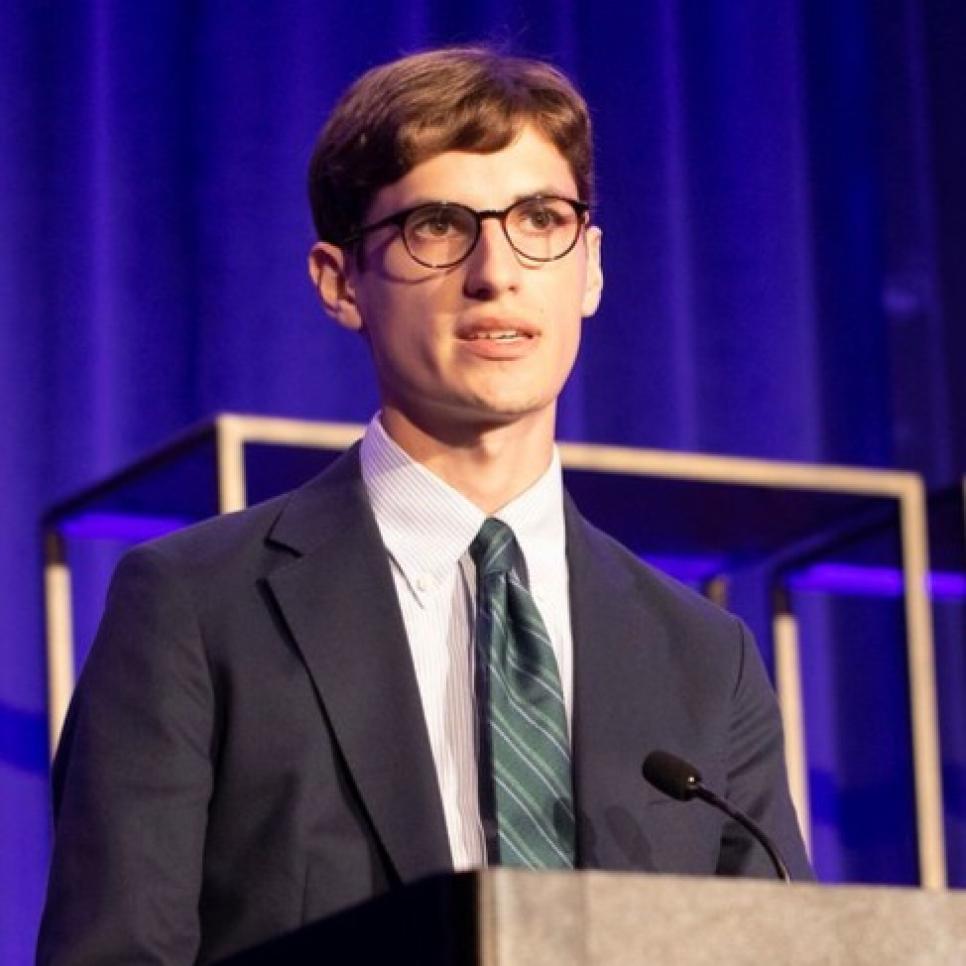
Golfer Sam Gerry became a suicide prevention advocate because of his own battle with depression. ‘When I started talking about what I was going through with my parents or friends and teachers, everybody was surprised,” he said.
“We’ve kind of been having this discussion in golf on a very surface level. It’s almost like this abstract discussion how golf impacts mental health. But it’s never really been made real until now,” Sam said. “I think it’s really, really important to reflect on how this can change things entirely.”
Sam noted the significance, and courage, of Murray’s parents specifying the golfer’s cause of death. It would be within their right to be vague, and Murray’s history with addiction might lead others to draw different conclusions. Instead, they opted to drag a painful conversation into the open, including what anyone could have done differently.
“We have so many questions that have no answers,” their statement said.
According to Lardon, more than 90 percent of suicides are preventable, but one of the persistent challenges is knowing what to look for. Some signs are overt, like a notable change in behavior or sleep patterns, but others are less so. It’s why so many experts point to the need to be proactive with everyone rather than reactive to a select few.
“It’s not necessarily waiting for things to go awry,” Sam Gerry said. “Even if someone seems like they’re feeling fine or nothing’s really going on, it’s just checking on them regardless. I think that’s something that’s enormously helpful.”
The best argument for proactive check-ins might be a commercial produced by English soccer’s Norwich City Football Club that has drawn more than 1.4 million views on YouTube. The ad depicts two friends sitting next to one another at a series of games, one cheery and effusive, the other sullen and withdrawn. It seems apparent which one is more likely to take his own life, but the twist at the end—the silent man sitting next to a now-empty chair—is meant to challenge our conventional view of mental disorders.
“It really sums it up,” Sam said of the ad. “Thinking back to my own experiences, when I started talking about what I was going through with my parents or friends and teachers, everybody was surprised. Unfortunately, mental illness and mental health challenges appear differently in everyone.”
That a second-tier club like Norwich would produce such a groundbreaking ad is not a coincidence given how prominent mental-health discussion has become in English soccer. Much of this can be traced to the death of popular former player and manager Gary Speed, whose suicide just hours after a seemingly normal TV appearance in 2011 rocked the sport and made mental health a unifying cause.
This is now the opportunity for golf, perhaps the only palatable outcome to emerge from Grayson Murray’s death. The PGA Tour and LPGA continue to expand their mental-health services for players—everything from a 24-hour mental health support line to on-site and virtual counseling, even a peer-to-peer network called SameHere that connects professional athletes and celebrities seeking to share their mental health experiences.
But if providing services is one step, forcing them out of the shadows is another. For instance, when Sullivan, the Korn Ferry Tour player, was missing cuts while in the throes of anxiety and depression, he wasn’t aware he could take a medical leave for mental-health reasons in the same way a player could if they had knee surgery. He said the mistake was his, but it was a byproduct of a larger problem.
“Unfortunately, that’s what we’re taught to do. You put your head down, you don’t complain and you play through it,” he said. “Well, what if that’s the reason you’re struggling? It just snowballs.”
Asked what he would like to see happen, Dr. Lardon said he dreamed of a “mental health trailer” at tour sites, where players could seek counseling or meditate as easily as they could run on a treadmill or re-grip their wedges.
“Not a trailer for crazy people,” he said, “but a trailer for ‘optimal mental health.’”
Perhaps this was a far-fetched concept a week ago, but one would hope it’d be taken more seriously now. Murray’s death at 30 deprived him the chance to deliver on his full potential, but he still has a chance to change the sport.
It starts with hard conversations, but none harder than the kind required after it’s too late.
This article was originally published on golfdigest.com
The Latest News
-
December 25, 2024Aussie path to Champions Trophy glory begins with Ashes clash as schedule revealed
-
December 24, 2024‘Good to go’: Head’s cheeky injury jab as ‘unbelievable’ Aussie run machine gets green light
-
December 24, 2024How to watch the NFL in Australia: Full Boxing Day schedule for Netflix’s first ever NFL stream | Sporting News Australia
-
December 24, 2024Cricket 2024: Boxing Day Test Talking Points, India vs Australia, Melbourne Cricket Ground, Sam Konstas debut, Jasprit Bumrah, news, videos, ideas, analysis
-
December 24, 2024Australian gold miner makes $443 million claim in international court


